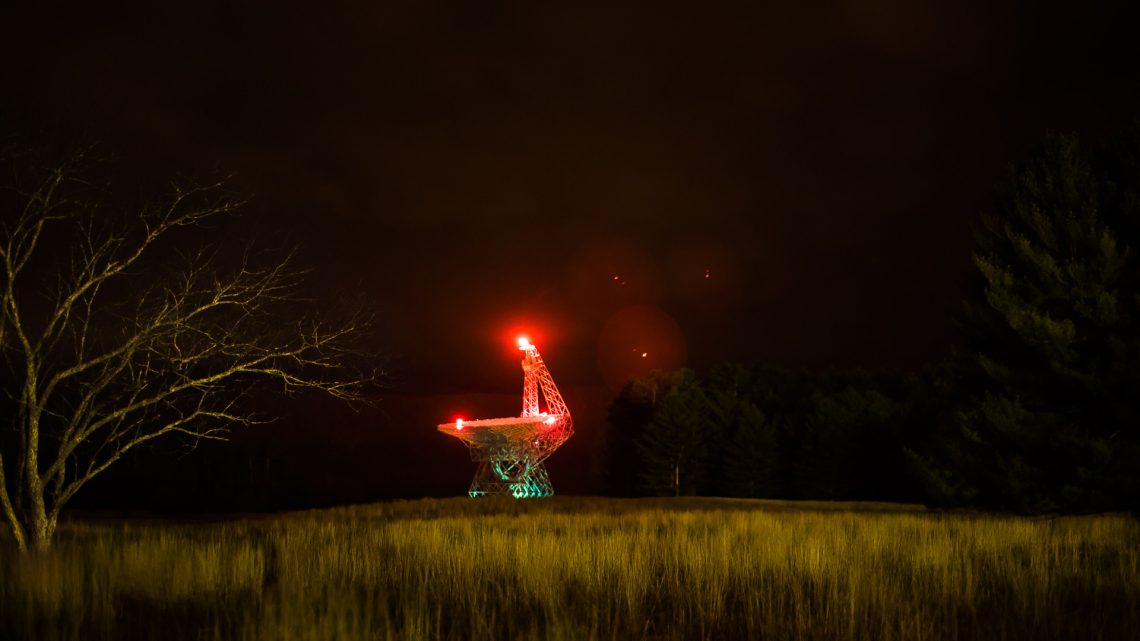
Scientists Need Help Looking for Aliens in Massive New Trove of SETI Data
February 15, 2020Across the world, a team of scientists have their strongest telescopes pointed out into space, hoping to hear extraterrestrial life. Now, scientists have released 2 petabytes of radio data, asking for help in finding signs of aliens.
The Breakthrough Listen search, which released the data, is a 10-year project surveying the sky for extraterrestrial life—the largest ever scientific program of its kind. It includes an analysis of one million stars that are closest to earth, scanning our galaxy and beyond with observations from a global network of powerful telescopes. It’s funded by billionaire Yuri Milner, who invested 100 million dollars in 2015 into this Search for Extraterrestrial Intelligence (SETI), as the field is known.
In addition to this data dump, scientists performed their own analysis on a small subset of the data. University of Pennsylvania graduate student Sofia Sheikh, along with researchers from numerous institutions, looked at 20 stars relatively close to us to see if there were any radio signals coming our way. This may seem like a narrow research goal, but sorting out what is just astrological background noise or human interference requires a lot of algorithmic power and technical know-how.
“It’s still like looking for a needle in a haystack,” Sheikh said.
The stars Sheikh looked at are in the Earth Transit Zone, which is a slice of our galaxy from which intelligent alien life, if it exists there, would be able to see Earth move across the Sun. This is modeled on the way that we detect other planets: by watching to see if stars flicker when planets pass in front of them. The thinking is that intelligent life would develop a similar strategy for identifying other planets, and (once they’ve detected that we’re here) would beam radio signals directly at us.
Unfortunately, the researchers found nothing. If there’s any intelligent life in these 20 planets in this small area of our galaxy, they’re not beaming any signals our way in the frequencies Sheikh’s team was measuring.
That’s why Breakthrough Listen made all the data public: one study is unlikely to find signs of life, but we may have better luck if scientists across the globe can run their own analyses. Breakthrough Listen periodically releases data to the public, including tips on how to analyze the data. With that, anyone with experience coding in Python can try their hand at finding aliens.
Breakthrough Listen hopes to remove the barrier of data collection—which costs a lot of money and requires a lot of resources—so that scientists can explore new ideas for detecting aliens.
Take Sheikh’s study for example: it was based on the assumption that intelligent alien life developed like us, adopting the same method to search for planets and sending similar radio signals. While these assumptions are based in science, they still apply a human lens to creatures that could operate completely differently than we do.
“One of the biggest challenges in astrobiology right now is how to think about things with non-human minds,” Sheikh said.
Some of those ideas include looking for atmospheric pollution from a planet undergoing industrialization, looking for the glint of metal from alien artificial satellites, or focusing on “Schelling points:" places that are deemed likely for civilizations to meet up or place beacons without communicating. Breakthrough Listen identified the center of our galaxy as a possible Schelling point, focusing more resources on observing it for possible transmissions.
The data in this project comes fresh from some of the most powerful telescopes in the world, including the uniquely-positioned Parkes radio telescope in New South Wales, Australia (which gets a perfect view of the galactic center from its position in the southern hemisphere). The team also used the Green Bank Observatory in West Virginia—which is the world’s largest steerable radio dish—and a UC Berkeley-operated telescope called the Automated Planet Finder.
Even if someone does find signals of extraterrestrial life, there’s no set protocol for what to do next. As for the Breakthrough Listen team, Sheikh said they plan to make all their findings public, inviting other scientists to double check their work. With all the resources being poured into the field right now, Sheikh is optimistic that someone will find something.
If you'd like to join the search, you can check out the data here.

